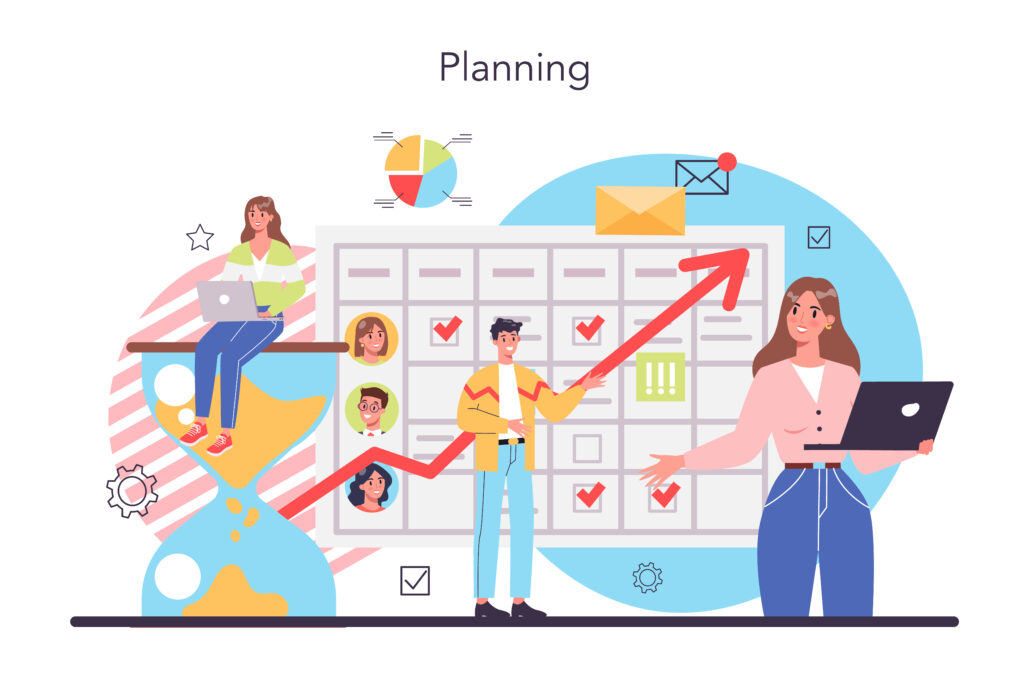Succession planning is crucial for the uninterrupted changeover of a company’s leadership. The process helps create a ready leadership pipeline. It also has other benefits for organisations as well as employees. But the process can be complicated, and many approaches may go wrong. So here are the dos and don’ts for business succession planning that you should know.

The Dos Of Business Succession Planning
Here are the dos of contemporary succession planning for business owners.
Do Start Planning Early
You must begin planning for the leadership transition early. Avoid waiting till a leadership position is vacant. Identify potential successors early. Plan how you will develop their skills, such as by identifying skill gaps and suitable training methods. Start developing the skills of the staff members with leadership potential. It will help you keep a pipeline of potential leaders ready.
Do Identify & Develop Talent Using Data
Recognising high-potential employees who can take on leadership positions is the core of business succession planning. But the identification of the potential successors should be based on analytical insights. It is likely that your organisation already has systems in place for tracking employee performance.
You need to check the analytics on employee performance. Identify the employees with the skills that leaders in your organisation must have. Also, identify the skill gaps. Create a leadership development plan based on the skill gaps you identified. Try to tailor the development plan. Tailor it to the training and learning needs of the individual successors.
Do Collaborate With Stakeholders Across Departments
Make sure that you involve stakeholders from all departments when creating the business succession plan. This is necessary for ensuring that the succession plan reflects the leadership needs of the entire organisation. The department-specific concerns and opportunities about leadership succession can be discussed.
The overall business strategy of your organisation is dependent on the operations of all departments. So, it is important that input is taken from the heads and experts in every functional team. For example, the IT department of your organisation can give you input on what skills and competencies make a candidate ideal as the departmental leader.
Do Document The Plan In A Central System
The plan must be documented clearly and in detail. This will help ensure that it can be shared with and accessed by every stakeholder. Documenting your plan will make it possible for everyone to be aware of what is going to happen.
Documenting a business succession plan will make it possible to review it whenever needed. Key people from across departments must be able to access the document, review the plan, and perform updates. So, the best practice is to document every step and save the document in a central system for access by all.
Do Reassess The Plan Periodically
Business environments are subject to changes. So, you must reassess your business succession plan. The plan must be updated regularly. It must reflect the changes in the business environment.
Check if the needs of your organisation have changed. Check if there have been changes in employee performance and strategic objectives. You need to keep updating your succession plan as per the changing needs.
The Don’ts Of Business Succession Planning
Do you know that while over 85% of business leaders see succession planning as an urgency, less than 15% think they do it well. So, here are what you should avoid during company succession planning.
Don’t Delay Until A Crisis Hits
Do not procrastinate the process of succession planning. Your business will become vulnerable when people leave or retire. Operations will be affected, and processes will be delayed. Your business may suffer from disruption and losses.
Don’t Limit Successor Pools To Familiar Faces
Don’t build the pool of potential successors with just known faces. Also, don’t get into favouritism. Such an approach can introduce bias and can end up transitioning the less suitable people.
Innovation will also be hindered if your successor pool is not large enough. The diversity of leadership skills will also be limited. So choose successors solely based on skills and behaviours.
Don’t Keep Plans In Silos
Don’t overlook the need for sharing succession plans across departments. If you don’t share it proactively, people may never receive it. People may also ignore the business succession plan if not proactively shared across the organisation. The goal is to make everyone understand and bring them on the same page. You need to get stakeholders to willingly accept and appreciate your plan.
Don’t Neglect Compliance & Documentation
You need to ensure that the compliance and documentation requirements are being followed for the succession plan. So, consider the specific laws about employment opportunity and discrimination. You should also ensure that the process of choosing successors is fair and transparent. Create a strong policy on succession and document it.
Don’t Assume One Approach Works for All
Your organisation has different departments and leadership positions. So, don’t assume that a single strategy will do magic everywhere. It means you need to have a flexible plan. Your business succession planning approach should be flexible enough to consider the needs of individual departments and leadership roles.
Common Pitfalls You Can Avoid With The Right Tools
Here are the common pitfalls in succession planning that can be avoided with the right tools.
Poor Talent Assessment
Planners may fail to assess internal talents properly. They may fail to identify and develop the right candidates. Performance management software can help with accurate talent assessment. Such software can help with the ongoing management of employee performance.
You can keep assessing employees’ competencies and update leadership development plans according to newly identified skill gaps. Research conducted by Deloitte found that more than 90% of the organisations practising continuous performance management have better data for people-related decision making.
Neglecting Stakeholder Involvement
Planners may ignore major stakeholders. For example, they might not include departmental heads in the company succession planning. This might lead to poor alignment of the plan with overall organisational goals. Communication and project management platforms can help.
Not Utilising The Right Tools
Planners may work with traditional tools like spreadsheets. As a result, they can fail to capture and consider important data-driven insights for succession planning.
Tools like Human Resources Information System (HRIS) and Human Resources Management Systems (HRMS) can help with succession planning. You can use various modules with these systems to streamline the planning process.
Ignoring Inclusion & Diversity
Planners may overlook the value of diversity in business succession planning. This can affect the workforce diversity targets of the organisations. But most importantly, it hinders innovation.
Individuals from different backgrounds bring unique ideas and new perspectives. So, it is important to ensure the representation of different groups. Analytics platforms powered by Artificial Intelligence (AI) can help identify talents from underrepresented groups.
How Software Supports Smarter Succession Planning
More than 80% of the employers mentioned using some type of software for succession planning in their organisation. Here is how software can help.
| Identify & Assess: | Develop & Plan: | Analyse & Report: | Integrate & Collaborate with: | Address & Support: |
| High-potential employees | Personalised training programs | Current performances | Human Resource (HR) systems | Succession gaps and risks |
| Workforce skill gaps | Career progression paths | Bench strength and successor readiness | Various departments | Diversity and inclusion targets |
| Employee performance | Succession planning scenarios | Future talent needs | Workforce development plan | Documentation and communication needs |
Table 1: Benefits of using software for succession planning
Ready to Implement a Succession Planning Software?
Succession planning is essential for business continuity today. Its main purpose is to prevent disruption when leaders move out of the organisation. The objective is to keep qualified leaders ready to fill vacant positions. This is also an approach to internal hiring.
Succession planning also helps reduce hiring costs. It ensures that the internally hired leaders know the organisational culture. Succession planning also improves the engagement and morale of staff members. It creates skill and career development opportunities for employees.
Assessing employee performance and identifying high-potential employees are critical steps in succession planning. Various software programs can make this process easy and accurate for you. The software also supports other tasks in succession planning, including documentation, reporting, analytics, and communication. So, get it today.





